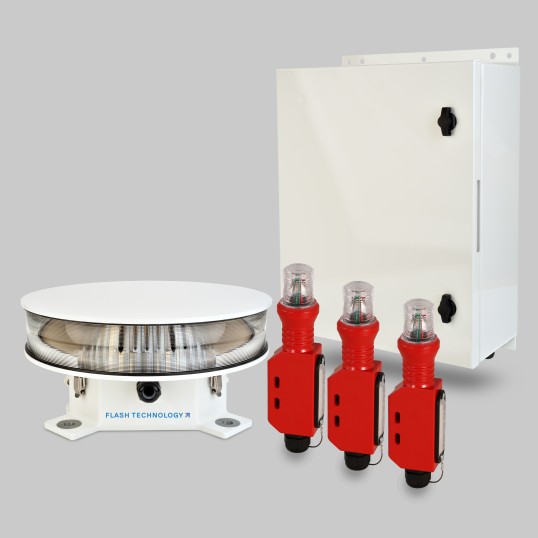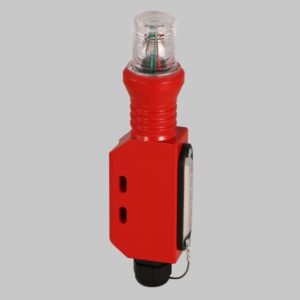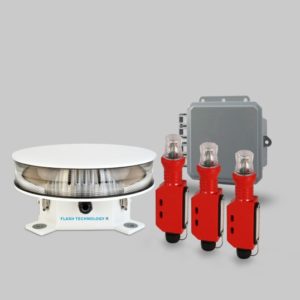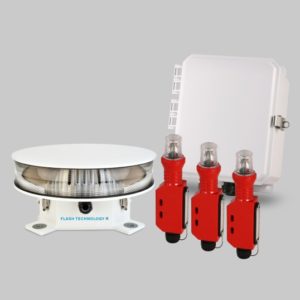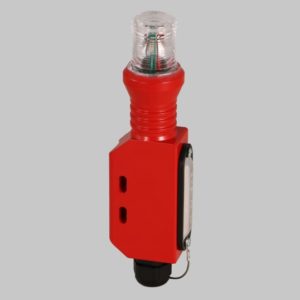The Vanguard Medium FTS 370r is a red L-864 medium intensity LED obstruction lighting system for structures 150’ to 1050’ AGL (FAA tower types A1-A3). The system also meets FAA L-885 low intensity catenary requirements. It complies with CAR 621 2nd edition for medium intensity CL-864 flashing lights and ICAO 6th edition standards for medium intensity type B obstacle lights.
The FTS 370r uses a single cable for communications as well as beacon and marker power. Firmware can be upgraded for future compatibility with no need for controller modification. The single enclosure houses a low-voltage environment, removing the need for an interlock switch and allowing alarms to remain active when the door is open.
FTS 370r Vanguard Medium Features
- Infrared lighting – NVG and NVIS compatibility using 850nm infrared (IR) LEDs on the flashhead per FAA AC 150/5345-43J
- Interleaved LEDs and by-pass circuitry provide longer life by allowing the loss of individual LEDs up to the 25% limit
- Surge immunity of 25kA to withstand 99% of all lighting strikes
- Patented Fresnel optics to minimize ground scatter
- Ruggedized photodiode in metal housing with shielded cable
- Input power breaker switch eliminates replaceable fuses
- Aircraft Detection Lighting Systems (ADLS) interface
- Automatic failsafe switches to day mode after 19 hours of no mode change; can be disabled if necessary
- 4-line OLED backlit display for visibility in any lighting conditions
- Dry contact monitoring (day, night, marker, PED, GPS, comm alarms and mode status)
- Compliant with AC 70/7460-1L
- 5-year warranty
FTS 370r Vanguard Medium Options
- SMART Card – monitor and control the system remotely and receive full diagnostic information through LTE modem or ethernet-based connectivity. SNMP, Modbus or Eagle Protocols may be used.
- LTE modem for improved communication stability
- Outdoor Wi-Fi antenna for onsite diagnostics and lighting inspections
- GPS synchronization
- Upgrade firmware remotely
- TECK90 Support – provides protection from RF interference and damage on high-power broadcast towers up to 700′ AGL


